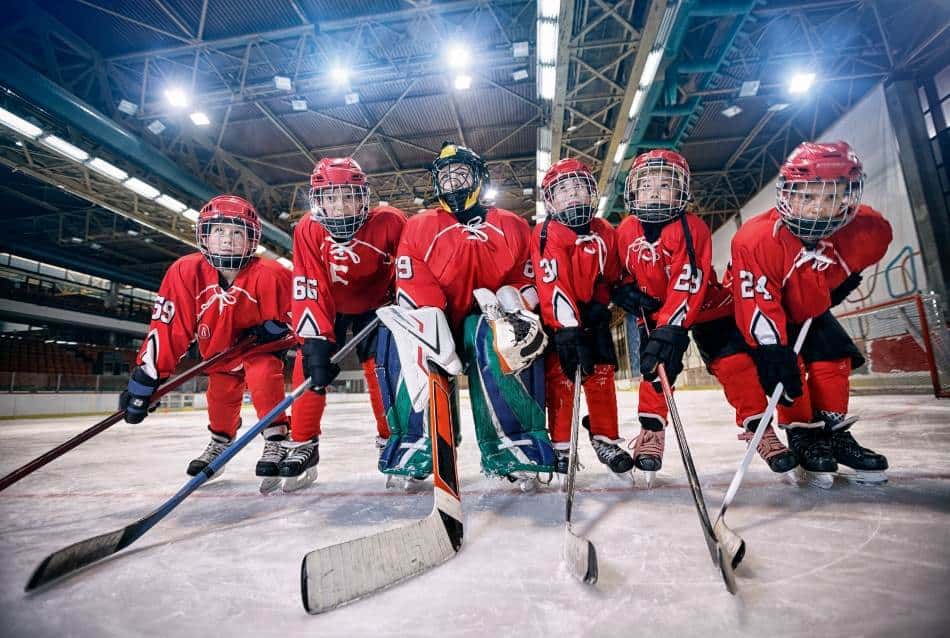
Hockey is one of the best sports in the world, for a multiple of reasons. I help coach my sons novice (7 and 8 year olds) team. If I can help my 4 and 8 year olds learn the Great Game (and eventually my daughter). I know this guide can help you too.
Is hockey hard to learn? Yes. There are many different skills you need to master to get good at hockey. But you CAN learn easily and fast with practice.
Hockey takes time and effort there is no question about that
Lets take a deep dive and go over what skills and equipment you will need to get you going and improve or start your hockey journey.
Is Hockey Hard to Learn?
Yes, hockey can be a very difficult game to learn. It will take lots of time and patients to learn the basics and then advance your skill level.
If you’re a parent looking to start your child into the sport than you need to start them as young as possible to give them time to learn from a young age.
It is much easier for a child to start at the age of 4 or 5 than it is for a teenager or adult. The reason for this is because, if you start late and want to play organized hockey
The kids that have been involved for 2, 3, 4 or more years, depending on your situation, will be much more advanced in the game and this will discourage your child from wanting to play.
With that being said, do not hesitate to involve your child or yourself into hockey if you have waited a while or have never played. I whole heartedly believe ANYONE can learn the game and get good at it over time.
It isn’t about making the NHL or making a career out of hockey. Its about Fun, Teamwork, Being Active and making friendships. If it leads into something then great but manage your expectations.
When Should I Start Hockey?
The earlier you start hockey, the better. Typically you start hockey as a child at 4 years old. My kids started in CanSkate at 3 years old to learn the most important skill in hockey: Skating.
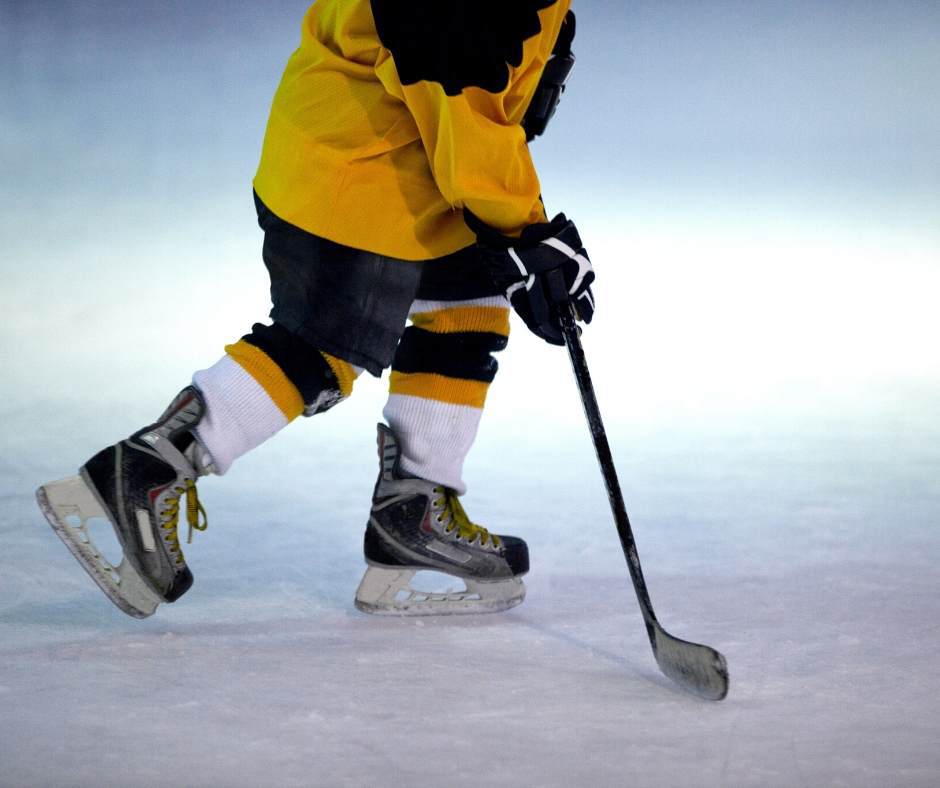
When a 3 year old hits this ice, its important to manage your expectations. They will not take off and start skating like the pros.
It will take a lot of patients and practice before they start to improve. There will be a lot of sliding on the ice, which is perfectly fine because they need to get comfortable on the ice and learn what ice is all about.
If you’re not a 4 year old
I suspect you aren’t if you’re reading my article
Then you can still learn to play. Whether you’re 8, 10, 18, 25, 35 or 40 years old, ANYONE can learn how to play. The only thing you need to do is START.
Lets keep reading to find out what else you need to know.
What Equipment Do I Need to Start?
In the beginning, you will only need to learn how to skate. It will take a while for you to learn and you will need to be patient with yourself. Remember you can do it.
To start, you will need at least 3 pieces of equipment:
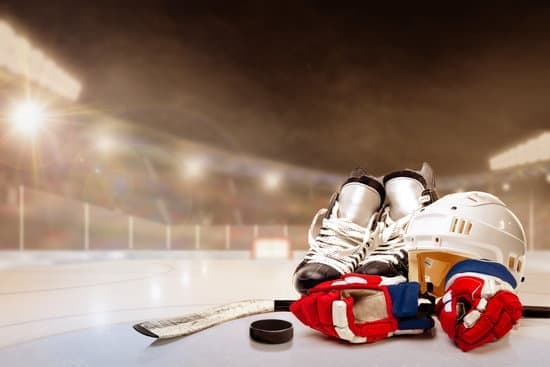
- Skates
- Helmet
- Elbow Pads
There are a couple other pieces of equipment you may want to invest but are totally optional.
Those are, Hockey pants to protect your bum when you fall. And you will fall.
Also shin pads to protect your knees. But the 3 above are the most important.
Lets look at them a little closer
Skates For Beginners
For your first pair of skates, you do not need to spend a weeks pay on them. In fact you can more than likely find a used pair at your local sports store.
Where we live, Play It Again Sports offers amazing options for every level of hockey and at a fraction of the cost of a new pair.
And I know there will be a spot wherever you live too.
You should know that skates size differently than shoes. Usually 1 to 1.5 size smaller than your shoe size.
Skates too big will make it harder to balance, you will have much less support in your ankle and will be tripping over your own feet when you try and take your first strides.
Too small and your feet will absolutely start hurting within minutes of skating.
I have a pair that are border line too small and I can only make it about 30 minutes before the pain is too much, but I tough it out and am able to finish my skate.
When picking skates, make sure you try on several pairs, ask questions and don’t leave the shop without sharpening your new/used skates.
Helmets for Beginners
Second most important piece of equipment, the HELMET.
You will fall and you will fall hard. It is part of the process. Like I tell my kids
“If you fall down
GET BACK UP”
Rylan 8
Shake it off and keep trying
It will get much easier as you go. The helmet will help protect your head from cuts and bruises but wont do much for concussions, so try your hardest not to fall on your head too often.
Like skates, try on several different helmets and find one that is comfortable and fits you tight enough that you aren’t able to move it around on your head too much
But not too tight that it causes pain. Again ask questions to your local sports shop, they will be more than happy to assist.
Elbow Pads
These elbow savers are sometimes overlooked. I remember when my
Now 8 year old
Was in CanSkate, many of the kids would not be wearing elbow pads, and I took it upon myself to gently remind some parents, who may not have realized,
How important elbow pads are. My guess is that 85% of the time when you fall, you fall backwards and the first thing you land on is your elbows.
“OUCH”
Greyson 4
This may sound silly, but once you learn how to fall… yes learn how to fall, I know its a weird concept but you will learn
You will be able to fall correctly avoiding hurting yourself more. But why not have some personal protective equipment in place to soften the blow
If you don’t have something protecting your elbows you could seriously injure yourself. Especially as an adult because you weigh much more than a child
And of course we adults get hurt much easier than young children. Most kids seem to bounce right back up not even noticing. But none the less, Elbow Pads are a key piece of equipment when you are starting out.
How Do I Start Playing?
First things first. You need to learn how to skate, turn, stop and stand up off the ice before you can even consider playing hockey.
You need to take every chance you can to get out on the ice
Whether its taking skating lessons
CanSkate for toddlers, children or teenagers
Adult skating lessons
Just find some ice, strap on the skates, helmet and elbow pads and get out there. even if you’re on your knees the whole time sliding around or using the boards to support yourself as you move around the rink
Get used to the ice and what its like being out there. Practice standing up from your knees, over and over and over.
Public skating is a perfect time to get some practice in for an hour at a time. usually costs $2 and you wont feel silly because there will be a lot of beginners just like you.
Just like anything in life, the only way to get good at something is consistently practice.
Once you are comfortable with skating, stopping, turning and standing up from your knees. You may be ready to play some pick up hockey on an outdoor rink (ODR) or find a league where you can pay to play usually $10-$15 per ice time.
Of course to play an actual game you will need to develop other skills beyond the ones mentioned above.
What Skills Do I Need?
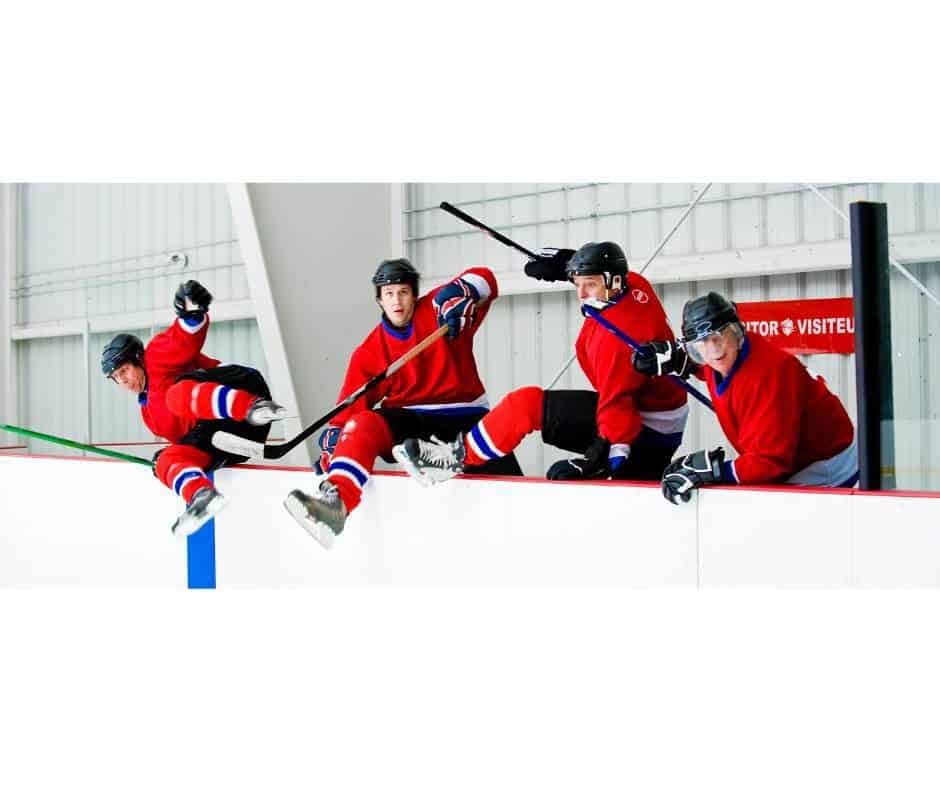
We mentioned some skills you need to learn in order to get the hang of the game. Here is a full list of skills you will need in order to play a game of hockey
- Skating
- Getting up from your knees
- Stopping
- Turning
- Skating Backwards
- Stick Handling
- Passing
- Shooting
- General knowledge of Hockey Rules
These are the basic skills you need in order to play a game of hockey.
We covered way you can learn number 1-5 above. For the others in the list lets look at them a little closer.
Stick Handling
To learn stick handling, there are an unlimited number of resources out there to show you the basics. It isn’t hard to practice. You can do it in your living room or basement, if you have one.
You need a hockey stick and a rubber ball or tennis ball. Just go back and forth, forehand to back hand
Back and forth, Back and Forth nice and slowly. Trying to keep the ball or puck (if you’re on the ice) on your stick.
Once you get better, add some speed. Check out a youtube video for beginners which will help you see visually what to do.
Passing
A pass in hockey is giving the puck to another player on your team that is in a better position than you.
This one is a little tougher by yourself. It is much easier to have a partner that can pass the puck or ball back to you.
Parents can and should practice with their kids regularly to get them used to it. You can also have several balls or pucks and pretend your passing to the boards or a wall.
Simply look to where you’re passing too and gently but accurately send the puck or ball in the direction you want it to go.
Receiving a pass means you need to softly allow it to get on your stick. I always remember the movie, The Mighty Ducks, when Coach Bombay uses an egg to teach his player the importance of accepting a pass gently
If you don’t accept a pass gently it will bounce right off your stick.
Shooting
This is where the fun is. Winding up and blasting that puck past the goalie. HE SHOOTS HE SCORES!!
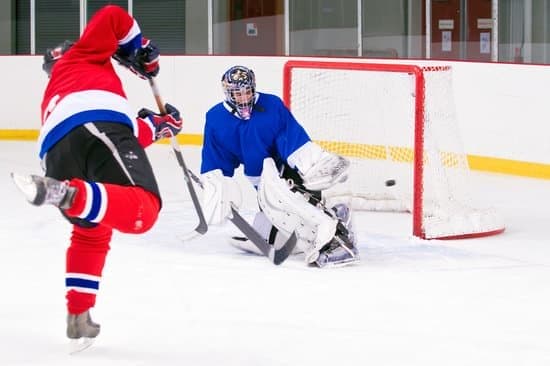
Theres a little more to it than that. And again it takes a lot of practice to get good at shooting.
You need Balance, body positioning, proper weight displacement. There are 4 main shots you can learn. A slap shot, wrist shot, snap/flick shot and a backhand.
Best way to learn is to buy a bucket of pucks and line them up in a row and just shoot shoot shoot until you’re too tired to shoot anymore.
At our practices, we spend 10-15 minutes and tell the kids to grab a puck and fire it against the boards over and over again. Going around giving pointers when we see fit.
General Hockey Rules
When playing pick up or shinny hockey, typically there are not any referees. So the guys/girls will usually call the game. Most of the time its only an blatant offside, which is when the player crosses the opponents blue line before the puck.
We can go into extreme detail about hockey rules and regs but that will be in another article
Conclusion
Hockey is considered the Greatest Game on Earth, especially in Canada. If you are considering learning the fundamentals and the game itself then dive deep, practice hard, don’t give up and have fun with it.
Chances are you aren’t going to make the NHL so why not make it fun, get some exercise and make some new friendships.
I really hope you enjoyed this article, and it gave you a little insight in what it takes to become a hockey player.